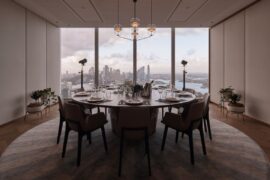
On the eve of Milan Design Week 2025, we take a look at some of the expected highlights across product launches, installations and events.

Habitus and Indesign are teaming up with iGuzzini for a very special event at Milan Design Week 2025 – and it’s time to reveal the esteemed guests who will be joining us!

Join us at Milan Design Week 2025 for an exclusive breakfast event in the heart of historic Brera with lighting experts, iGuzzini.

Hammond Studio’s fit-out for an exclusive North Sydney workplace draws on Italy for inspiration to craft a modern and sophisticated executive office.

Amidst the maelstrom of Milan – the countless installations, venues, parties, historic settings – our focus was on people. Welcome to the 2024 Indesignlive Milan Edit.

Denton Corker Marshall (DCM) is well known on the Melbourne and international architectural scene, and it was time for them to have a new home.

Leading the way in lighting for workplace environments, iGuzzini presents Laser Blade, a revolutionary new lighting system that allows illumination to be tailored to specific settings while showcasing the brand’s signature elegant, minimal design.

Encouraging the evolution of company culture is no mean feat, particularly when said company is in an industry as notoriously conservative as mining. Yet with their new Darling Park office for Yancoal, Hammond Studio managed to do just that.

Dance for Life is a rare opportunity for the architecture and design community to really let its hair down and party – all for a good cause. 2018’s dance celebration was no exception.

Designed by Gensler, the Hyundai Capital Convention Hall in Seoul, South Korea has harnessed intelligent design strategies to achieve a distraction-free learning/training space for staff, a custom assembly space, a functions venue, a place for guest lectures and a great wow-factor for client showcasing and presentations.

Sometimes the most highly evolved designs are incomplete. When conceptualising the new Suncorp headquarters in Sydney, the interiors team at Geyer worked to the idea of ‘designing to 80%’. The result is a radical take on the oft-used idea of workplace flexibility. While the building caters to the needs of its residents in the present, it comprehensively avoids dictating what these needs will be in the future.